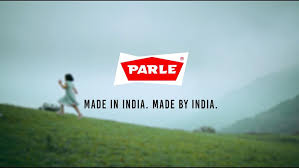Introduction to Parle
Parle is one of India’s most iconic and trusted fast-moving consumer goods (FMCG) brands, with a legacy that spans over eight decades. Established in 1929 in Mumbai, Parle began as a small confectionery factory producing sweets and toffees. Over time, it diversified into biscuits, snacks, and other food products, becoming a household name known for quality, affordability, and taste. Today, Parle is recognized not just in India but across more than 100 countries, making it a global ambassador of Indian flavors.
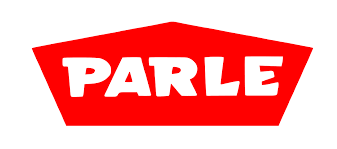
The brand’s most celebrated product, Parle-G, holds a special place in the hearts of millions. Introduced in 1939, Parle-G became the world’s largest-selling biscuit by volume, a distinction acknowledged by the Limca Book of Records. Affordable pricing and a simple, trustworthy image made it a staple in Indian homes, rural shops, and even tea stalls, earning the tagline “G for Genius” in its modern campaigns.
Parle’s portfolio is vast, catering to diverse tastes and age groups. In biscuits, the range includes Monaco, Hide & Seek, Krackjack, and Fab. In confectionery, timeless treats like Melody, Poppins, Kismi, and Mango Bite remain immensely popular. The brand has also expanded into savory snacks under FullToss and Mexitos, responding to changing consumer preferences.
A key strength of Parle has been its marketing strategy, which blends nostalgia, cultural relevance, and creative storytelling. Campaigns such as “Melody Itni Chocolaty Kyun Hai?” and “G Maane Genius” have become part of Indian pop culture. Parle’s advertising often focuses on emotions, family values, and relatable everyday moments, making the brand resonate deeply with consumers.
The company also prides itself on affordability without compromising quality, a factor that has allowed it to penetrate both rural and urban markets. Its distribution network is one of the most extensive in India, ensuring Parle products reach even the remotest corners of the country. This accessibility, coupled with strong brand loyalty, has kept Parle ahead of many competitors.
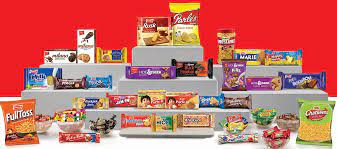
In recent years, Parle has adapted to changing consumer trends by introducing health-conscious offerings, innovative flavors, and attractive packaging. It has embraced digital marketing and social media campaigns, keeping the brand relevant for younger generations while retaining its traditional appeal.
Parle’s legacy lies in its ability to remain consistent in quality while evolving with the times. From the nostalgic joy of Poppins in childhood to the comfort of Parle-G with a cup of chai, the brand has become more than just a product—it’s a part of India’s cultural fabric.
Today, Parle stands as a symbol of trust, taste, and tradition, proving that with the right balance of quality, affordability, and emotional connection, a brand can remain timeless. It is not just a market leader in biscuits and confectionery, but also a story of Indian entrepreneurship and resilience that continues to inspire.
Parle’s Marketing Campaigns
Here’s a list of some of the best and most memorable Parle marketing campaigns that have left a lasting impression on Indian consumers:
1. Parle-G – “G Maane Genius”
Parle-G, one of India’s most iconic biscuit brands, has built its legacy not just through quality and affordability, but also through some of the most memorable advertising campaigns in the country’s history. Among them, the “G Maane Genius” campaign stands out as a defining moment in Indian FMCG marketing.
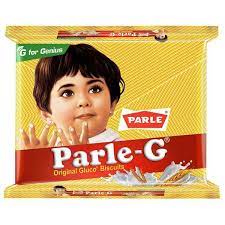
Launched in the early 2000s, this campaign aimed to reposition Parle-G beyond being just a tea-time biscuit. The central idea was to associate the brand with intelligence, progress, and potential—values that resonated deeply with both urban and rural India. The campaign portrayed bright, curious children and hardworking individuals, suggesting that Parle-G was the fuel behind their genius. By linking nutrition and energy to mental sharpness, the messaging struck a chord with parents who saw the biscuit as an affordable yet nourishing snack for their children.
The advertisements were simple yet powerful. Featuring school-going kids solving problems, excelling in academics, or displaying creativity, they reinforced the message that “G” stood for Genius. The campaign’s execution was supported by a consistent brand visual—the Parle-G girl—who became an enduring mascot, symbolizing innocence and potential.
“G Maane Genius” was more than a catchy slogan; it was a strategic move to strengthen emotional connection with consumers. It celebrated everyday intelligence, not just academic brilliance, making the message relatable across socio-economic segments. The campaign also extended into print, radio, and outdoor media, ensuring wide visibility.
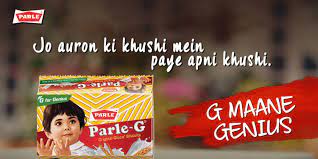
Over time, “G Maane Genius” became ingrained in popular culture, with the phrase often used conversationally beyond the brand’s context. It helped Parle-G maintain its position as the world’s largest-selling biscuit by volume and reinforced its place in Indian households as a trusted, wholesome companion for generations. This campaign remains a benchmark in Indian advertising for its simplicity, relatability, and lasting impact.
2. Melody – “Melody itni chocolaty kyun hai?”
The “Melody itni chocolaty kyun hai?” campaign is one of the most iconic and longest-running advertising slogans in India, making Melody toffee a household name. Launched in the late 1980s by Parle, the campaign played on a simple yet genius idea—creating curiosity that could never truly be answered. The tagline, which translates to “Why is Melody so chocolaty?”, became an irresistible hook that consumers still remember decades later.
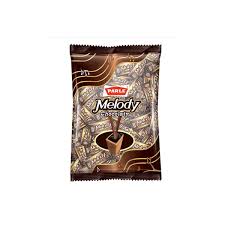
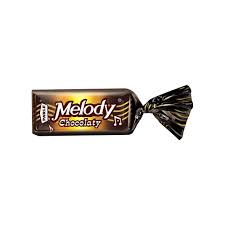
The advertisements typically featured lighthearted, humorous scenarios where characters tried to discover the “secret” behind Melody’s rich chocolate taste. However, just as they were about to reveal the answer, they would pop the toffee into their mouth, unable to resist its indulgence. This playful narrative reinforced the idea that the chocolatey taste was so tempting, it couldn’t be explained—it simply had to be experienced.
The brilliance of the campaign lay in its simplicity and universal appeal. By posing a question instead of making a direct claim, Parle tapped into consumer curiosity and turned it into a memorable brand identity. The ads worked equally well across age groups—children were drawn to the fun, adults enjoyed the wit, and everyone remembered the tagline.
Over the years, the campaign evolved with different ad films but always retained the same theme and catchphrase, ensuring strong brand recall. Whether in TV commercials, print ads, or radio spots, the question remained unanswered, which only fueled its charm.
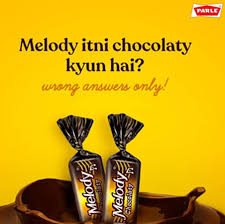
“Melody itni chocolaty kyun hai?” is more than just a tagline; it’s a part of Indian pop culture. It helped Melody secure a loyal fan base and remain a leading player in the toffee segment for decades. By blending curiosity, humor, and irresistible temptation, the campaign set a gold standard for product-focused advertising in India.
3. Krackjack – “Sweet and Salty” Ads
Parle’s Krackjack, India’s first sweet-and-salty biscuit, has enjoyed a unique position in the snacking market for decades. The “Sweet and Salty” advertising campaigns have been central to building this identity, cleverly highlighting the biscuit’s dual flavor profile in a way that’s both fun and relatable.
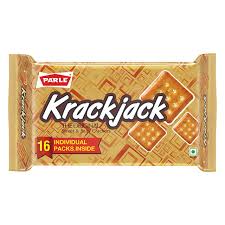
Launched in the 1970s, Krackjack introduced Indian consumers to a distinctive taste—neither purely sweet like cookies nor purely salty like crackers. The challenge for Parle was to communicate this novelty effectively. The “Sweet and Salty” campaigns solved this by focusing on humorous, slice-of-life situations where contrasting personalities, moods, or events mirrored the biscuit’s two-in-one nature.
One of the most memorable approaches involved lighthearted banter between characters—often a sweet-natured, polite individual paired with a witty, slightly cheeky counterpart—drawing a parallel to Krackjack’s balanced taste. These commercials, set in everyday scenarios, made the product’s USP crystal clear: it’s the perfect snack for those who want both flavors in one bite.
The slogan “Sweet and Salty” became more than a taste descriptor—it evolved into a personality trait, subtly suggesting that Krackjack eaters appreciate balance, versatility, and a playful spirit. The campaign also extended to print and radio, with punchy lines that reinforced this dual appeal.
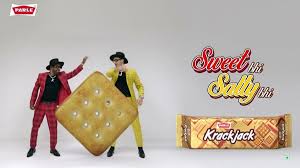
Over the years, the brand modernized its ads while retaining the core theme, ensuring multi-generational recall. The “Sweet and Salty” identity allowed Krackjack to stand out in a crowded biscuit market, appealing to both children and adults.
By blending humor, everyday relatability, and a clear product promise, the “Sweet and Salty” campaigns didn’t just advertise a biscuit—they created a lasting flavor memory. Even today, Krackjack remains synonymous with its tagline, proving that a simple, well-communicated USP can sustain a brand’s legacy for decades.
4. Monaco – “Khata Rahe Masti Mein”
Parle’s Monaco, India’s most popular salted biscuit brand, has long been associated with fun, lighthearted snacking. The “Khata Rahe Masti Mein” campaign perfectly captured this spirit, positioning Monaco as the go-to snack for moments of joy, sharing, and playful indulgence.
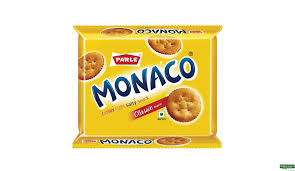
The tagline, which translates to “Keep eating in the mood for fun,” reflected the brand’s aim to connect with consumers beyond just taste—it tapped into the emotions of togetherness, friendship, and carefree enjoyment. The ads often featured groups of friends, families, or colleagues enjoying Monaco in relaxed, informal settings, where laughter and banter flowed as freely as the biscuits.
The creative strategy revolved around making Monaco more than just a biscuit—it became a symbol of light snacking that complemented life’s happy moments. Whether it was a picnic, a quick office break, or an evening at home, “Khata Rahe Masti Mein” communicated that Monaco was always welcome at the party.
Humor and relatability played a key role in the campaign’s success. The commercials often depicted quirky scenarios where Monaco acted as the binding element among people, adding flavor not just to their plates but also to their conversations. The crisp texture and salty taste were subtly woven into the storytelling, reinforcing its appeal as a snack you could munch on endlessly without feeling heavy.
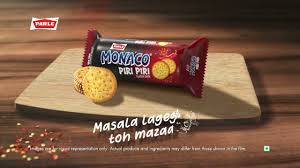
By combining a catchy slogan, relatable situations, and a focus on joy, the “Khata Rahe Masti Mein” campaign strengthened Monaco’s brand personality as friendly, fun-loving, and versatile. It also allowed Parle to connect with a broad audience—from children to working professionals—while maintaining strong recall.
Ultimately, the campaign succeeded in making Monaco more than a product; it became an emotion tied to leisure, laughter, and togetherness, ensuring its place as a staple in Indian snack culture.
5. Kismi – “Kissi Se Khaas Pyaar”
Parle’s Kismi, a nostalgic caramel toffee infused with a hint of elaichi (cardamom), has been a beloved treat for generations. Known for its distinctive flavor and classic red-and-white wrapper, Kismi has carved out a unique space in India’s confectionery market. The “Kissi Se Khaas Pyaar” campaign tapped into the emotional and romantic side of the brand, making it more than just a toffee—it became a token of affection.
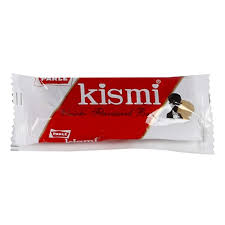
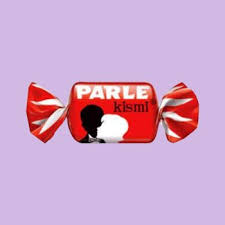
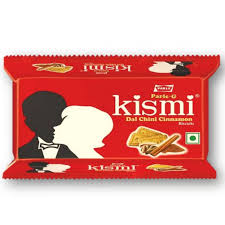
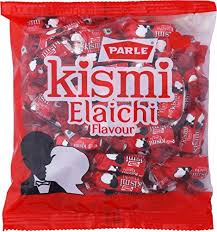
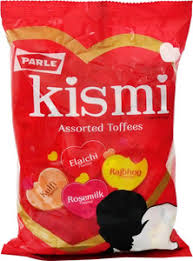
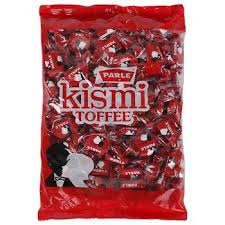
The tagline, meaning “A special love for someone,” beautifully connected the act of sharing Kismi with expressing fondness or love. The campaign’s storytelling often revolved around sweet, simple gestures—friends exchanging Kismi as a sign of closeness, couples using it as a playful way to say they care, or a child giving one to a parent as a loving surprise.
The ads leaned heavily into warmth, nostalgia, and the sentimental value of small acts. Just as Kismi’s flavor blended the richness of caramel with the warmth of cardamom, the campaign blended the sweetness of love with the spice of memorable moments. This emotional branding allowed Kismi to stand apart from other candies, which often focused solely on taste or fun.
Music and visuals in the commercials were soft, melodic, and heartwarming, appealing to audiences across age groups. While younger consumers connected with its romantic undertone, older generations appreciated the nostalgia and simplicity it evoked.

By aligning itself with moments of affection and emotional connections, the “Kissi Se Khaas Pyaar” campaign successfully elevated Kismi from being just a pocket-friendly sweet to becoming a symbol of love in small, everyday gestures. It reinforced the idea that sometimes, the smallest things—like offering a Kismi—can hold the greatest emotional value, keeping the brand relevant across decades.
6. Poppins – “Har Rang Mein Zindagi”
Parle’s Poppins, with its rainbow-like assortment of fruity flavors, has been a childhood favorite for decades. Known for its vibrant colors, playful round shape, and tangy-sweet taste, Poppins has always symbolized fun and variety. The “Har Rang Mein Zindagi” campaign beautifully captured this essence, presenting Poppins as a metaphor for life’s diversity, joy, and excitement.
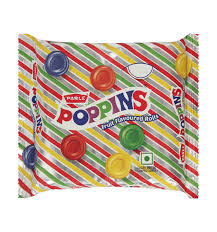
The tagline, which translates to “Life in Every Color,” reflected the brand’s positioning as more than just a candy—it became a celebration of experiences, moods, and personalities. Each color in the pack was associated with a different mood or moment, subtly suggesting that life, like Poppins, is best enjoyed when it’s full of variety.
The campaign’s advertisements were vibrant and visually engaging, featuring cheerful characters in colorful settings. Whether it was children sharing candies after school, friends enjoying them on a road trip, or families bonding over a pack, the visuals emphasized togetherness and sharing. The multi-colored Poppins became a symbol of inclusivity, spontaneity, and joy.
The storytelling cleverly tied flavor and color to life moments—red for passion, yellow for cheerfulness, green for freshness, purple for mystery—inviting consumers to pick a candy that matched their mood. This not only made Poppins relatable but also interactive, as people often playfully chose colors for themselves or their friends.
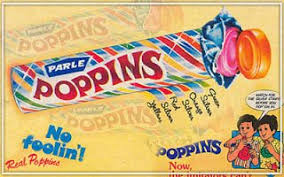
By focusing on color as a universal language of joy, “Har Rang Mein Zindagi” appealed to both kids and nostalgic adults. It reinforced the idea that happiness comes from embracing all shades of life—just as enjoying Poppins means savoring every flavor.
The campaign strengthened Poppins’ image as a timeless, fun-filled treat and deepened its emotional connect, ensuring it remained a bright, colorful part of India’s confectionery culture.
7. Parle Marie – “Har Pal Ujjwal”
Parle Marie, one of India’s most trusted and popular tea-time biscuits, has long been associated with lightness, wholesomeness, and everyday comfort. Known for its subtle taste, crisp texture, and nutritional value, Parle Marie appeals to consumers across all age groups. The “Har Pal Ujjwal” campaign, which translates to “Every Moment Bright,” beautifully positioned the biscuit as a companion to life’s simple, uplifting moments.
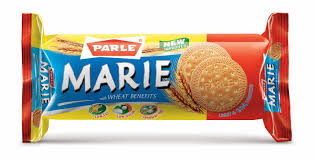
The campaign emphasized optimism, positivity, and the idea that even the smallest moments can be made brighter with the right company—be it loved ones or a warm cup of tea paired with Parle Marie. Through its messaging, the brand tapped into the Indian tradition of tea-time bonding, portraying scenes of families sharing stories, friends enjoying casual chats, and individuals taking a quiet moment for themselves.
The visuals in the advertisements were soft and warm-toned, reflecting the biscuit’s wholesome nature. The narrative focused on real-life situations—like a mother encouraging her child, colleagues sharing a light break, or grandparents reminiscing over chai—where Parle Marie became a silent yet meaningful part of the experience.
The “Har Pal Ujjwal” tagline not only conveyed brightness in the literal sense but also symbolized emotional warmth and hope. It resonated particularly well with homemakers and working professionals who saw tea-time as a pause to recharge and reconnect.
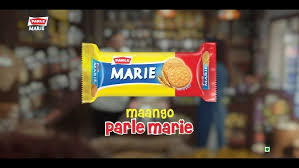
By combining emotional storytelling with the brand’s heritage of trust and quality, the campaign reinforced Parle Marie’s position as more than just a biscuit—it became a symbol of everyday joy and togetherness. The messaging was simple yet impactful, ensuring that in the competitive biscuit market, Parle Marie remained synonymous with lightness, health, and the bright side of life.
This campaign helped cement Parle Marie’s image as a timeless tea-time companion that turns ordinary moments into cherished ones.
8. Hide & Seek – “Start Searching”
Hide & Seek, Parle’s iconic chocolate chip cookie brand, has been a favorite among Indian snack lovers since its launch in the mid-1990s. Known for its rich chocolate flavor, crunchy texture, and irresistible aroma, it quickly became a go-to indulgence for both children and adults. The “Start Searching” campaign played cleverly on the brand’s name, turning the simple act of eating cookies into a playful adventure.
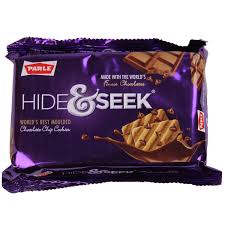
The campaign’s core idea was to make every bite of Hide & Seek more interactive and fun. It encouraged consumers to “start searching” for the chocolate chips hidden inside each cookie, transforming snack time into a game. This not only highlighted the brand’s generous use of real chocolate chips but also created a sense of anticipation and delight with every cookie.
The advertisements under this campaign were youthful, energetic, and full of playful banter. Scenes often featured friends teasing each other, siblings competing to find the most chips, or couples sharing a lighthearted moment over a pack of Hide & Seek. The tone was light, mischievous, and appealing to the brand’s primary target audience—young, fun-loving consumers who enjoy a mix of taste and excitement.
The tagline, “Start Searching,” also carried a subtle double meaning—it wasn’t just about looking for chocolate chips but also about embracing curiosity and spontaneity in life. This added a layer of emotional connection that made the campaign more memorable.

By blending a sensory highlight (rich chocolate chips) with an emotional hook (the joy of discovery), the “Start Searching” campaign reinforced Hide & Seek’s brand identity as a snack that is both delicious and playful. It positioned the cookie as more than just a treat—it became a little game in every pack, keeping consumers coming back for both the taste and the fun.
9. Parle-G – “You Can’t Beat the Taste” (Rural India Focus)
Parle-G, often called the “common man’s biscuit,” has been a household name in India for decades, known for its affordability, nutritional value, and nostalgic taste. With a massive presence in both urban and rural markets, Parle-G has consistently adapted its marketing strategies to resonate with diverse audiences. The “You Can’t Beat the Taste” campaign, with a specific focus on rural India, highlighted the brand’s unmatched flavor and emotional connection with consumers.
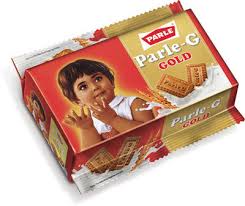
In rural areas, where price sensitivity and trust in heritage brands play a huge role in purchasing decisions, Parle-G positioned itself as a reliable, value-for-money snack that delivers both taste and energy. The campaign’s messaging reinforced the idea that despite the growing number of biscuit brands, none could match the distinct, comforting taste of Parle-G.
Advertisements often depicted simple, relatable rural settings—children studying under a tree while enjoying Parle-G, farmers taking a tea break in the fields, or families sharing biscuits during community gatherings. The focus was on portraying Parle-G as an integral part of everyday life, one that people of all ages could enjoy without stretching their budgets.
The tagline “You Can’t Beat the Taste” worked on two levels: it emphasized the unbeatable flavor and subtly hinted at the unbeatable trust Parle-G has earned over generations. The ads were created with earthy visuals, local dialects, and relatable characters to build authenticity and deepen emotional appeal in rural audiences.
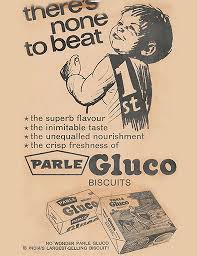
By blending strong brand recall with cultural resonance, the rural-focused “You Can’t Beat the Taste” campaign reinforced Parle-G’s dominance in India’s biscuit market. It successfully reminded consumers that while many snacks may come and go, the taste and trust of Parle-G remain constant—making it a timeless favorite across India’s heartland.
10. Parle Social Media Festive Topicals
Parle, one of India’s most beloved FMCG brands, has mastered the art of staying culturally relevant through its social media festive topicals. These campaigns leverage the country’s rich calendar of festivals—such as Diwali, Holi, Eid, Christmas, Independence Day, and regional celebrations—to connect with audiences in a fun, timely, and relatable way.
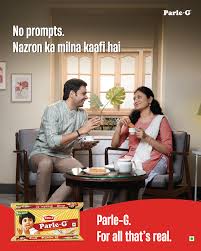
Parle’s festive topicals often feature its iconic product portfolio—Parle-G, Krackjack, Monaco, Melody, and more—creatively integrated into celebratory themes. For example, during Diwali, visuals might depict a pack of Krackjack doubling as a gift box, or Parle-G biscuits forming rangoli patterns. For Holi, colorful imagery and witty taglines blend brand elements with the joy of the festival, while during Eid, designs may highlight themes of sharing and togetherness over tea and biscuits.
What makes these campaigns stand out is their simplicity, humor, and cultural sensitivity. Parle’s social media team uses puns, playful imagery, and light-hearted copywriting to create quick, scroll-stopping content that sparks engagement. The brand also ensures that its festive posts resonate across diverse regions, using inclusive messaging that celebrates India’s unity in diversity.
These topicals are not just about festive cheer—they reinforce brand recall. By consistently associating its products with positive moments, Parle subtly positions itself as part of the country’s shared celebrations and everyday joys. The immediacy of social media allows the brand to respond to trends in real time, adding an extra layer of freshness to its marketing.
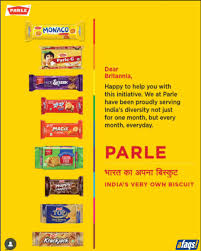
Through its festive topicals, Parle demonstrates how a heritage brand can stay young and relevant in the digital age—by being present, witty, and emotionally in sync with its audience. This approach ensures Parle remains a part of India’s celebrations, both online and offline, year after year.
Conclusion on Parle’s Marketing Campaigns
Parle’s marketing campaigns stand as a testament to the brand’s ability to blend tradition with innovation. Over the decades, the company has crafted memorable advertising that resonates with both urban and rural audiences, making its products an integral part of India’s cultural fabric. From the nostalgic charm of Parle-G’s “G Maane Genius” to the witty humor of Melody’s “Melody itni chocolaty kyun hai?” and the relatable everyday moments in Krackjack and Monaco ads, Parle has consistently delivered messaging that is simple, emotional, and unforgettable.
One of Parle’s greatest strengths lies in its understanding of Indian consumers. The brand doesn’t just sell biscuits, chocolates, or confectionery—it sells moments of joy, togetherness, and familiarity. By weaving storytelling into its marketing, Parle has been able to create emotional connections that last for generations. Campaigns like Parle-G’s rural outreach ads and social media festive topicals showcase the company’s adaptability, proving that a heritage brand can thrive in both traditional and digital spaces without losing its core identity.
The versatility of Parle’s marketing approach—spanning TV commercials, print ads, outdoor stunts, and real-time social media content—ensures that the brand remains relevant in a rapidly evolving consumer landscape. By embracing humor, nostalgia, cultural relevance, and product-centric creativity, Parle has set a benchmark for FMCG advertising in India.
In essence, Parle’s marketing success comes from its deep-rooted understanding of Indian culture, its ability to evolve with changing times, and its unwavering focus on delivering value and delight. Whether it’s through a biscuit that has been part of childhood memories or a witty topical post on social media, Parle continues to prove that great marketing is not just about selling products—it’s about becoming a part of people’s lives.

